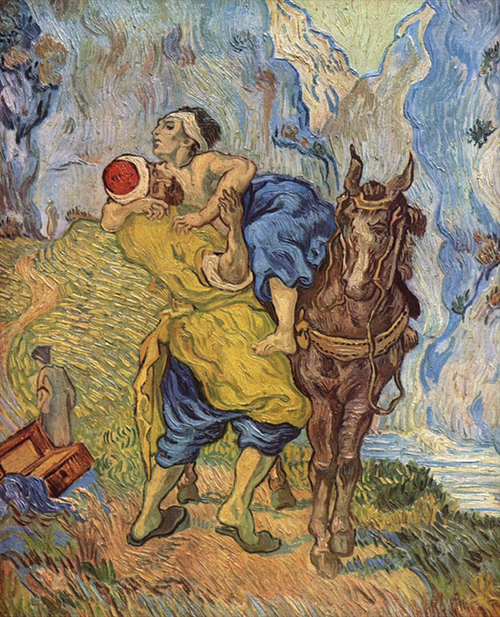In the context of acting, “bit players” refer to actors who have very small, often uncredited, roles in films, television, or theatre productions. These roles typically involve minimal dialogue (or none at all) and are considered supporting parts rather than leading or even supporting roles.
However, at times these “bit players” can hold a vital clue in the unfolding of the story.
For example, the café worker who notices that the gentleman sits in the same seat by the window on a Monday and Thursday and reads the morning paper.
This person turns out to be a spy.
Or the bus conductor who remembers the same individual routinely catches the 8.15am bus and suddenly does not appear.
Or, again, the gardener working next door who notices the absence of milk being delivered.
In today’s Gospel (Lk 10: 25 – 37) known for generations as ‘The Parable of the Good Samaritan’ there are two ‘bit players’ – a priest and a Levite.

The 1890 painting of this parable by the Dutch Post-Impressionist painter Vincent Van Gogh follows an earlier painting by the French painter Eugène Delacroix.
The Delacroix painting has evidence of one ‘bit player’ while Van Gogh has the two – the priest and the Levite.
In each of these paintings the ‘bit players’ are overwhelmed by the energy at the forefront of the canvas.
A study of each of these paintings shows the figures walking away, all we see is their back.
Our Gospel story tells us the person robbed was left half-dead. Those who passed by couldn’t tell whether the person was dead or alive.
Both the priest and the Levite were Temple officials. As such they could not risk contracting impurity by touching a corpse. It was better that they remain aloof (“crossing to the other side” vv.31, 32) and preserve their purity at the cost of their obedience to God’s law of love.
Their Temple service appears to have little impact on their personal lives!
I suggest the story is not so much about when I have helped another in need but rather when have I not in order to preserve my own purity.
